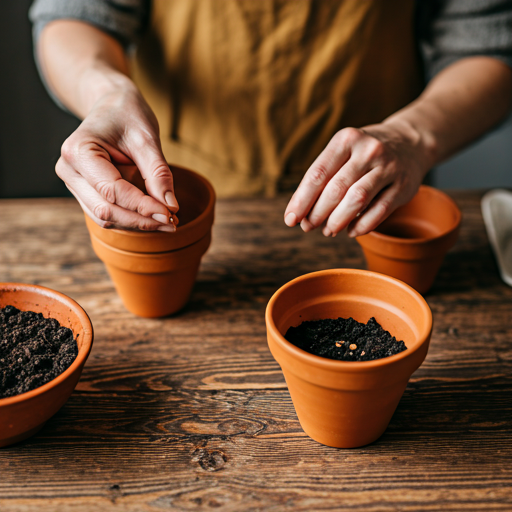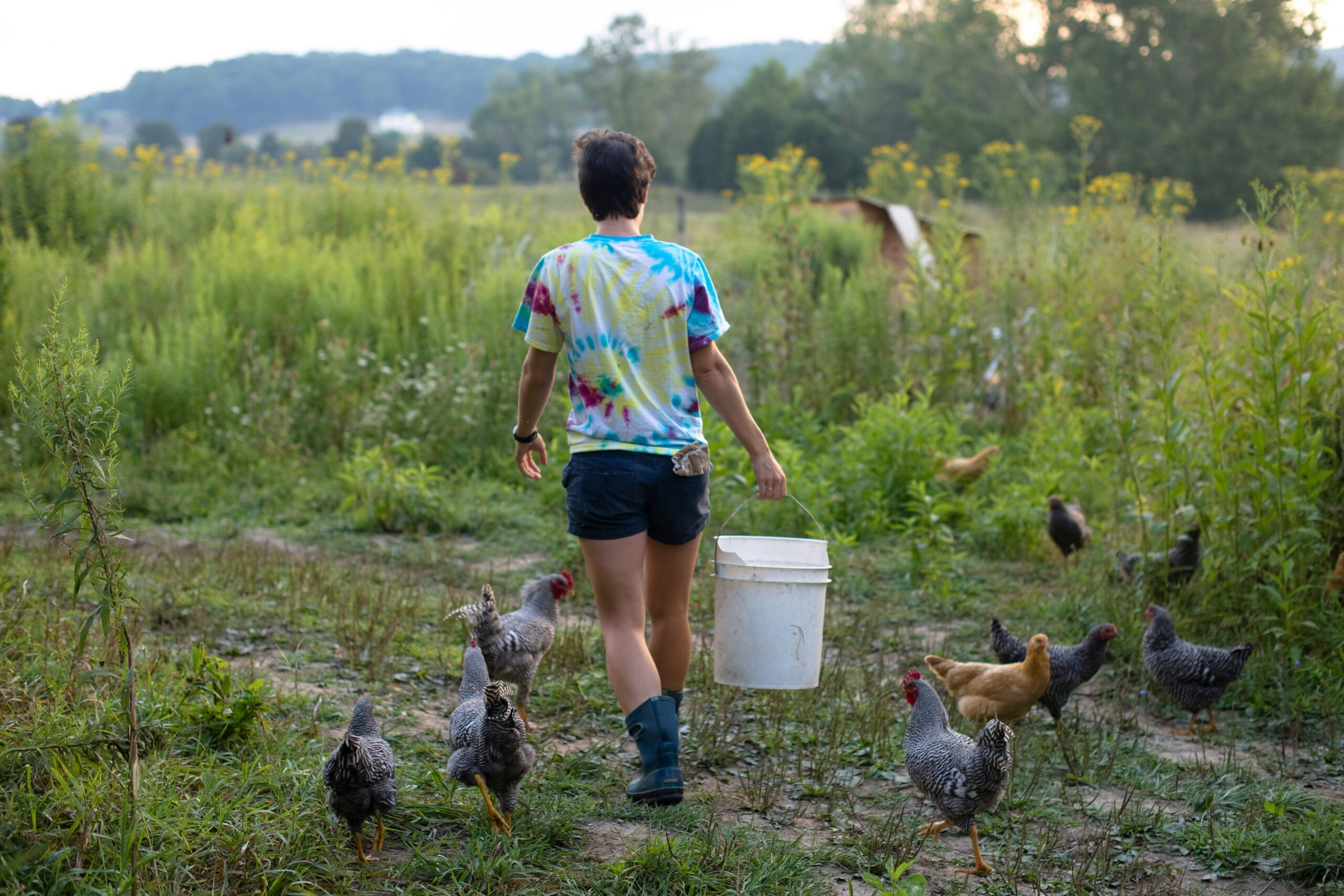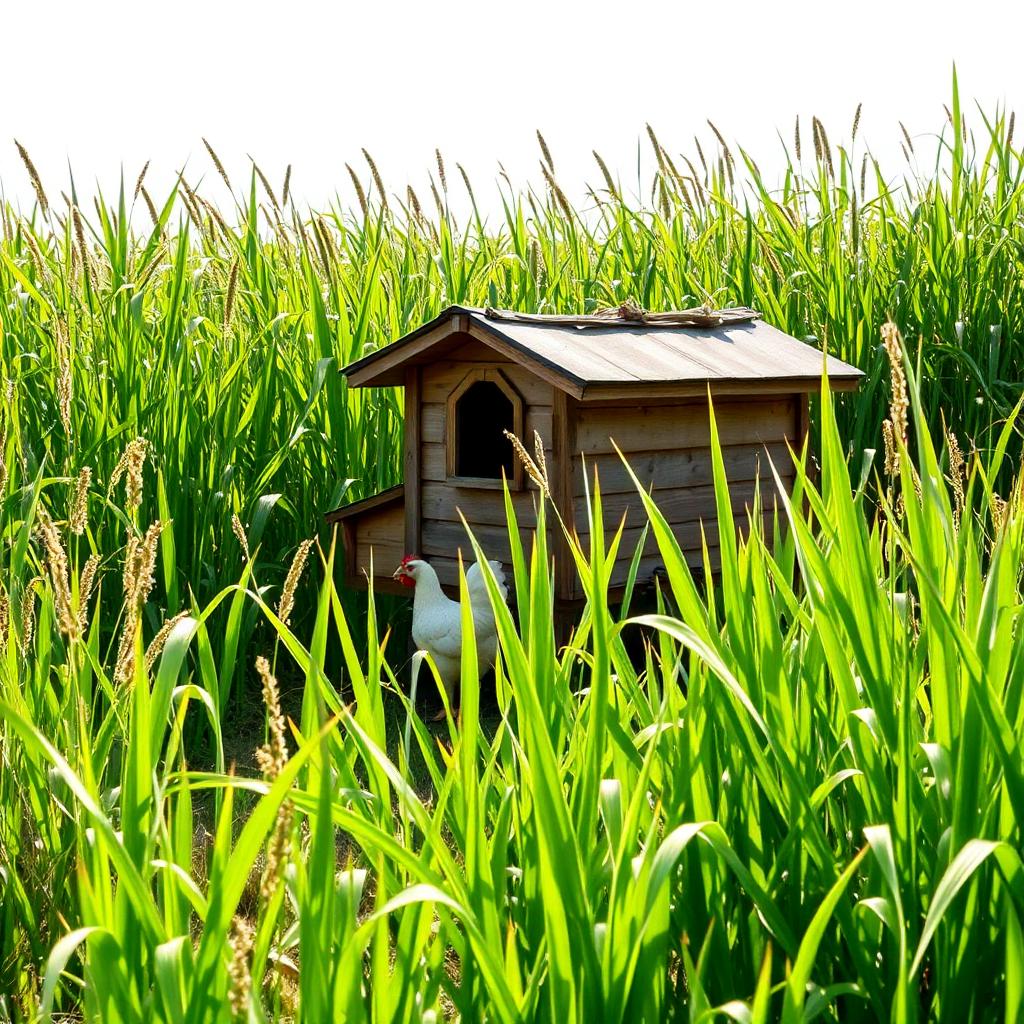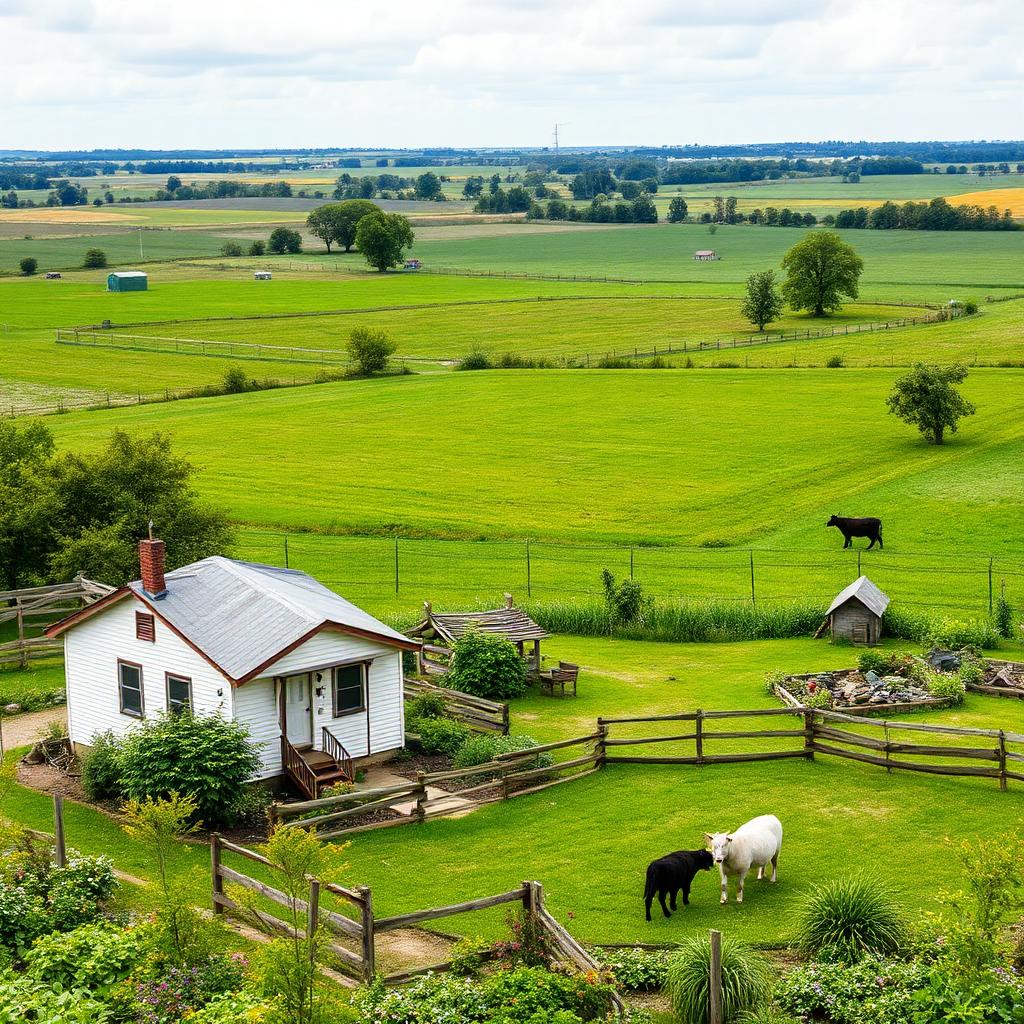As winter starts to wane and the promise of spring blooms on the horizon, many gardening enthusiasts eagerly anticipate the planting season. But why wait for the weather to warm up when you can start your garden seeds indoors? Starting seeds early is a rewarding way to jumpstart your garden and gives you more control over your plants’ growth. From cost savings to an abundance of variety, the benefits of starting garden seeds are plenty. However, there are some challenges, too. In this blog, we’ll walk through the joys, the benefits, the potential drawbacks, and the essential steps to successfully start your garden seeds.
Why Start Garden Seeds? The Benefits
- Cost Savings
One of the major benefits of starting seeds indoors is the cost savings. Seed packets are often much cheaper than buying fully grown plants at a nursery. While the upfront costs of buying seed-starting supplies like trays, soil, and lights might seem like an investment, they’re typically far less than purchasing mature plants. Plus, if you save seeds from your own garden, you can cut costs even further in future years. - A Greater Variety of Plants
Many nurseries carry only a selection of common plants, but when you start your own seeds, the possibilities are endless. Starting from seed opens the door to unique, heirloom, or even hard-to-find varieties that might not be available locally. Whether it’s a specific type of tomato or a colorful flower, growing from seed allows you to curate your garden exactly how you want it. - Stronger, Healthier Plants
Starting plants from seed gives you a head start on the growing season, and you have full control over the environment in which your plants grow. From day one, you can ensure they have the right amount of light, warmth, and water to thrive. This often results in healthier, more robust plants when it’s time to transplant them into your garden. Starting seeds allows you to avoid the stress of acclimating young plants that were transported from a nursery. - Personal Satisfaction
There is something deeply gratifying about watching a tiny seed grow into a vibrant plant. The process of nurturing seedlings from start to finish brings immense joy and a sense of accomplishment. Gardening, in general, can be therapeutic, but when you’re the one who took those first steps of planting the seed, the reward feels all the more fulfilling.
The Drawbacks of Starting Garden Seeds
While the benefits are enticing, starting seeds at home isn’t without its challenges.
- Time and Attention
Starting seeds takes time and attention. Unlike purchasing mature plants that you can simply plant into the soil, seedlings require consistent care, such as regular watering, light, and temperature management. This can be a bit more labor-intensive, especially for beginner gardeners. If you’re not prepared to spend the necessary time, you might find the process overwhelming. - Space Requirements
Not everyone has the space to set up an indoor seed-starting station. Seedlings need sufficient light and warmth, which may require specialized equipment like grow lights or a heated mat. Depending on the size of your seed-starting operation, this can take up valuable space in your home. If you have limited indoor space or don’t want to invest in additional equipment, this can be a limitation. - Timing Challenges
Timing is crucial when starting seeds indoors. If you start them too early, they may outgrow their containers before the weather warms up enough for them to be planted outside. On the other hand, if you start them too late, they may not have enough time to grow to a transplantable size before the season ends. Getting the timing right requires some research and planning, which can be tricky for first-timers. - Risk of Transplant Shock
Even the most carefully tended seedlings can experience some stress when it’s time to move them from the controlled indoor environment to the great outdoors. Known as transplant shock, this can result in stunted growth, yellowing leaves, or even plant death if not done properly. Proper hardening off (gradually acclimating plants to outdoor conditions) can reduce this risk, but it’s an extra step that requires attention.
Plants That Will Benefit from an Early Start
In Iowa, where the winters are long and cold, starting the right plants at the right time can make a big difference in your garden’s success. The best way to know when to start your plants is to read the seed packet. It contains a wealth of information. Rule of thumb is to start your seeds 6 to 8 weeks before the ideal time to transplant into the garden. With most plants, transplant time is after the last frost date for your area. Cold hardy plants like brassicas can be transplanted outside earlier than the tender plants. Another factor to consider is the days to maturity. If the plant you want for your garden has a longer than average days to maturity, you will want the plant a little larger when you transplant to the garden.
- Tomatoes Tomatoes are a warm-season crop that requires a long growing season to thrive in Iowa. Starting seeds indoors in Mid-February allows them to grow into strong, healthy seedlings that can be transplanted after the last frost (typically in late April or early May). Varieties like Roma, Beefsteak, or cherry tomatoes are great choices. You’ll need to provide grow lights or place them in a sunny window to ensure they receive enough light.
- Peppers Peppers, like tomatoes, need a long growing season. Start hot or sweet pepper seeds indoors by mid-January to give them plenty of time to grow strong before moving outdoors. Sweet peppers can wait until Mid-February. Popular varieties like Bell Pepper, Jalapeno, and Habanero will benefit from this early start. Keep in mind that peppers thrive in warm temperatures, so maintain consistent warmth for the seeds and seedlings.
- Herbs Many herbs, such as basil, thyme, oregano, and parsley, can be successfully started from seed indoors. Starting these herbs in mid-January gives you a head start on your herb garden and ensures you’ll have fresh herbs to harvest early in the season. Most herbs grow well in containers, making them ideal for small spaces and windowsills.
- Cabbage, Kale, and Other Brassicas Cool-weather crops like cabbage, kale, and broccoli can be started from seed in mid-January, especially if you want to harvest them early in the growing season. These plants are hardy and can tolerate frost, making them a great option for Iowa’s spring. Starting them indoors gives them time to grow sturdy enough for outdoor planting in early spring.
- Onions Onions are another plant that benefits from an early start. Whether you’re planting from seed or starting onion sets, beginning the process in mid-January allows you to grow large, robust onions by late summer. Onion seeds can take a long time to mature, so starting them indoors ensures they’ll be ready to be planted outdoors once the ground has thawed and the danger of frost has passed.
- Flowers If you’re looking to add vibrant color to your garden, starting flowers indoors in mid-January is a great option. Flowers like Snapdragons, Petunias, Pansies, and Marigolds can be grown from seed indoors and transplanted once the weather warms. These early-started flowers often bloom sooner and create an eye-catching display in the garden.
How to Start Garden Seeds: A Step-by-Step Guide
In Iowa, where the winters are long and cold, starting the right plants at the right time can make a big difference in your garden’s success. Mid-January is ideal for starting many cool-season crops, along with some early spring flowers. Here are some of the best plants to start indoors in mid-January:
- Choose Your Seeds
Start by selecting the seeds you want to grow. Consider your growing zone, climate, and the amount of sunlight each plant will require. Some plants, like tomatoes, peppers, and broccoli, do well when started indoors. Make sure to read the instructions on the seed packets to understand the best time to start your seeds indoors. - Gather Your Supplies
To start seeds indoors, you’ll need the following:- Seed trays or pots
- Seed-starting mix (avoid regular potting soil, as it may be too heavy for young roots)
- A source of light (grow lights or a sunny windowsill)
- A heat mat (for warmth-loving plants like tomatoes)
- A spray bottle or watering can for gentle watering
- Plant the Seeds
Fill your seed trays or pots with the seed-starting mix, leaving about a half-inch of space at the top. Plant your seeds according to the depth guidelines on the seed packet. Cover lightly with more soil if needed. Some seeds may need to be started in specific conditions, like with a layer of clear plastic over the tray to retain moisture. - Provide Ideal Conditions
Place your seed trays in a warm spot with plenty of light. A windowsill with southern exposure is ideal, but if that’s not available, a grow light will work just as well. Many seeds require warmth to germinate, so use a heat mat to maintain an optimal soil temperature (usually between 65–75°F). Keep the soil moist, but not soggy. Overwatering can lead to mold or rot. - Thin and Transplant
Once your seeds have sprouted and developed a few sets of leaves, you may need to thin them out to prevent overcrowding. Gently pull out the weaker seedlings, leaving the strongest ones to grow. When your seedlings are large enough and the outdoor conditions are suitable, it’s time to transplant them into your garden. Before doing so, gradually “harden off” your seedlings by placing them outside for a few hours each day, slowly increasing the time they spend outdoors. - Transplant into the Garden
After hardening off, your seedlings should be ready for the garden! Choose a cloudy day or plant in the evening to minimize transplant shock. Water them well after planting, and give them a bit of extra care as they adjust to their new environment.
What to Expect When Starting Seeds
- Patience is Key Starting seeds in mid-January means you’ll be nurturing your plants for a few months before they are ready for the garden. Expect to spend time monitoring their progress and ensuring they have everything they need to thrive. You’ll need to be patient during the early stages of growth as seeds germinate and seedlings develop.
- Specialized Care While starting seeds indoors offers more control over growing conditions, it also means your plants will require a bit more attention. You’ll need to provide them with proper light, either through grow lights or a south-facing window. Keep the soil consistently moist (but not waterlogged) and ensure temperatures stay warm enough for the seeds to sprout. As seedlings grow, you’ll need to thin them and ensure they don’t become root-bound in their containers.
- Transplanting Time By the time your seeds have grown into strong seedlings, it will be time to harden them off before transplanting them outdoors. Hardening off involves gradually acclimatizing your plants to outdoor conditions to prevent shock. Start by placing them outside for a few hours each day, gradually increasing the amount of exposure to sunlight and wind. After a week or two, your plants will be ready to transplant into your garden.
The Joy of Growing from Seed
The process of starting seeds is a rewarding journey that connects us to nature in a deep and meaningful way. From the first signs of germination to the eventual harvest, growing your plants from seed offers a sense of pride that is hard to replicate. Not only do you get to experience the beauty of nurturing life, but you also get to reap the rewards of your hard work—fresh, homegrown produce or beautiful flowers right in your own backyard.
In the end, the joy of starting garden seeds is as much about the experience as it is about the harvest. Whether you’re growing tomatoes for your favorite summer salad or planting colorful blooms to brighten up your space, each step brings you closer to something special. With patience and care, your little seeds will grow into vibrant plants, and you’ll get to enjoy the fruits of your labor for months to come.
Happy gardening!




